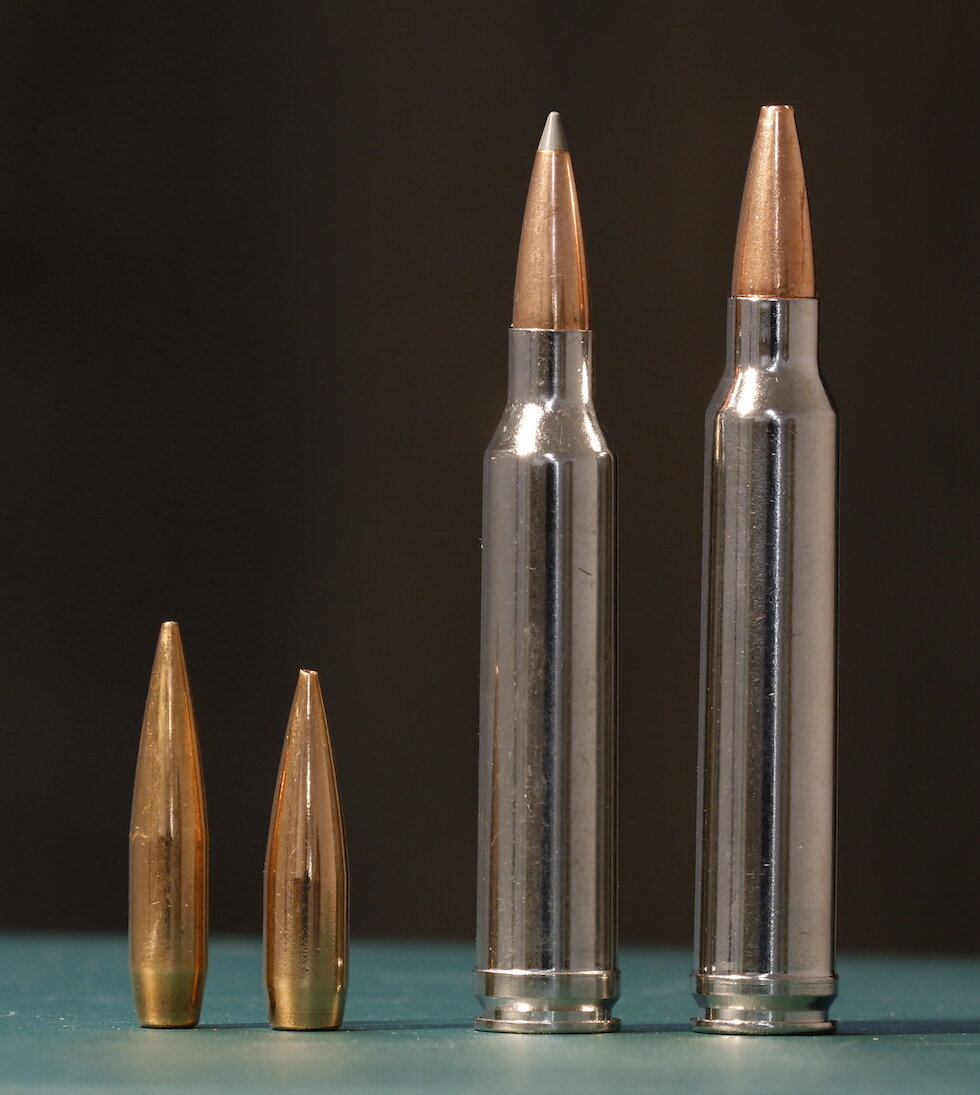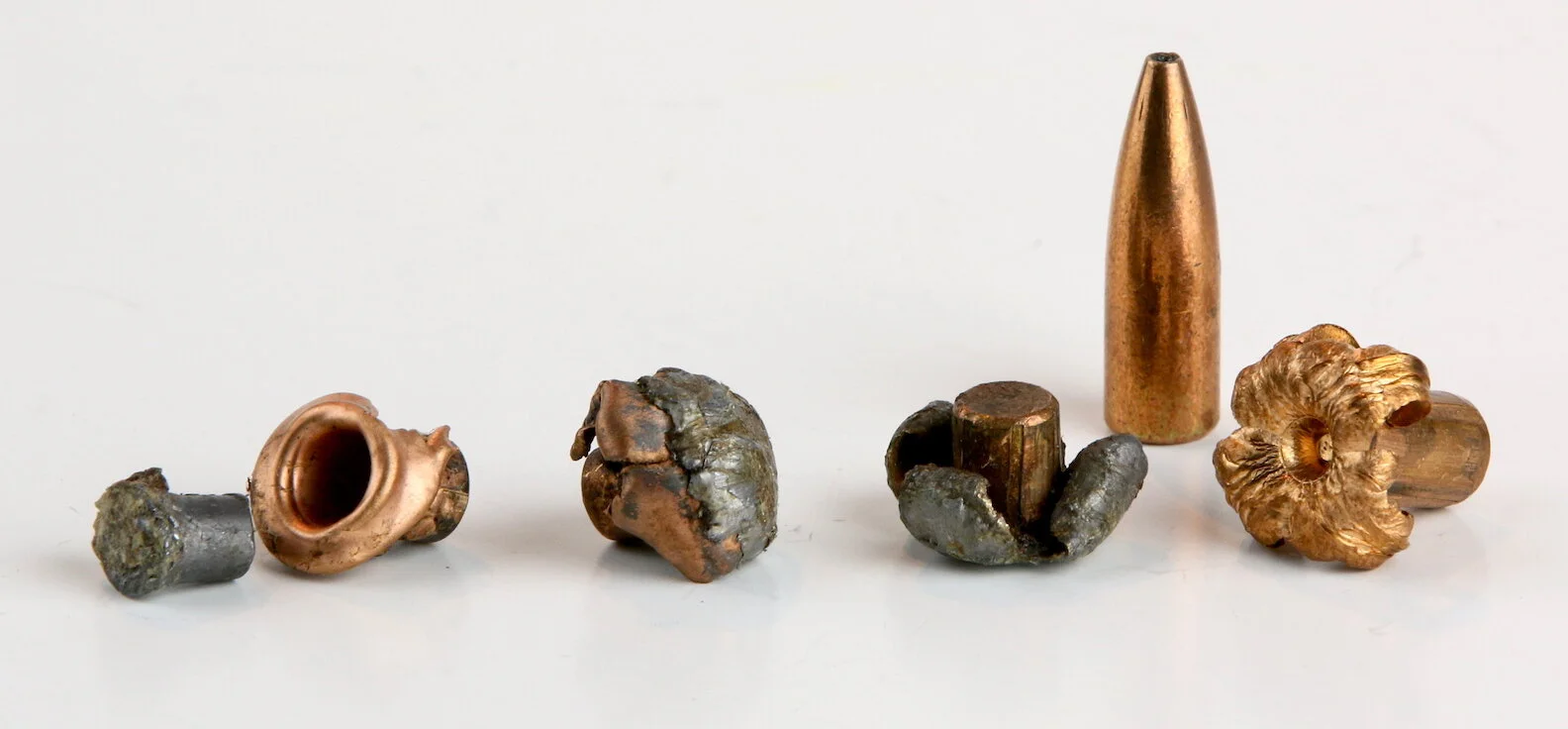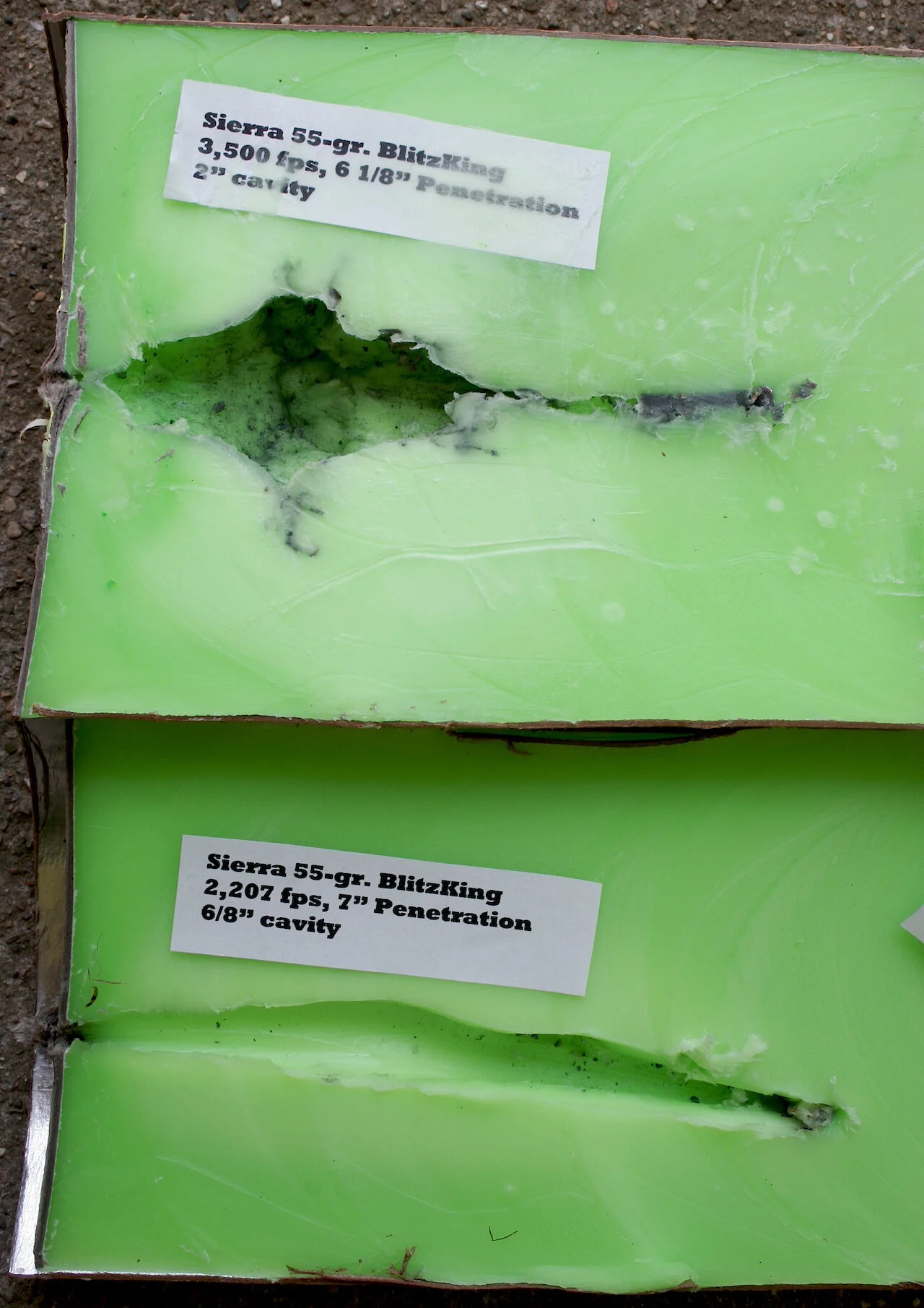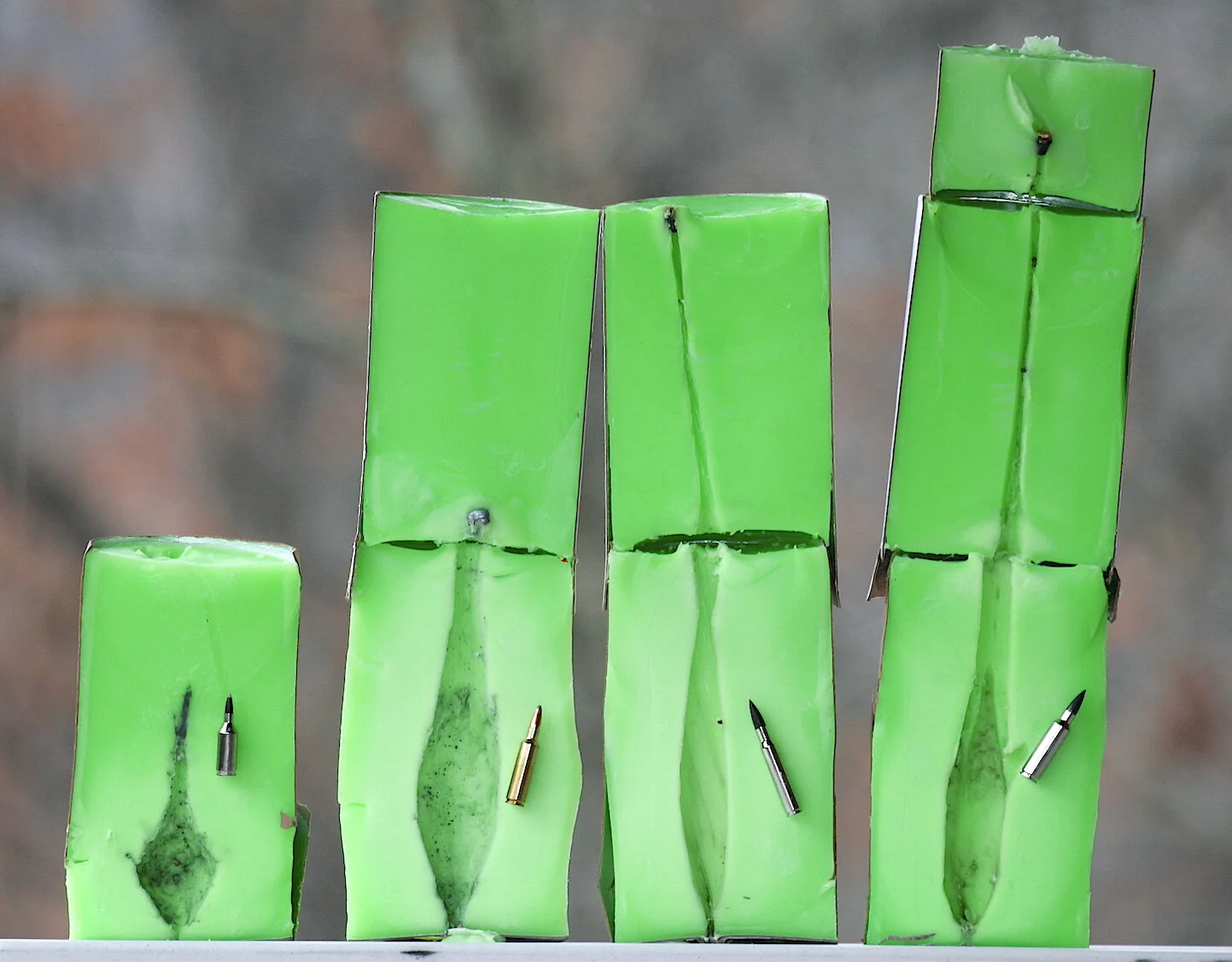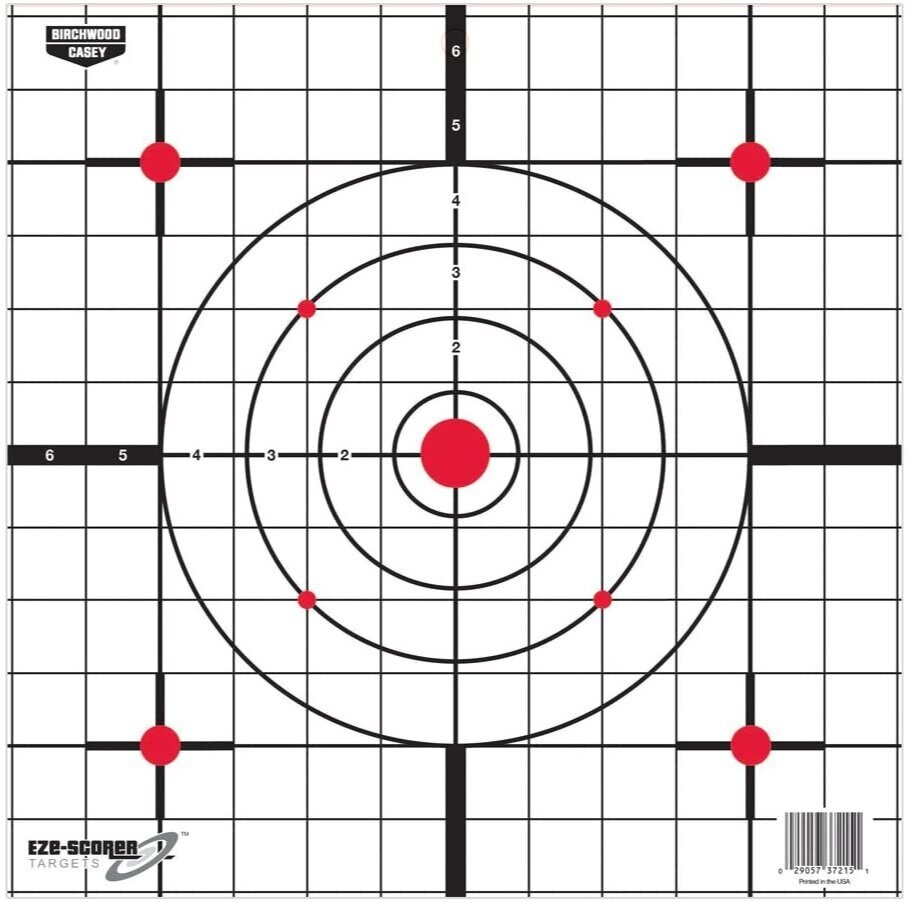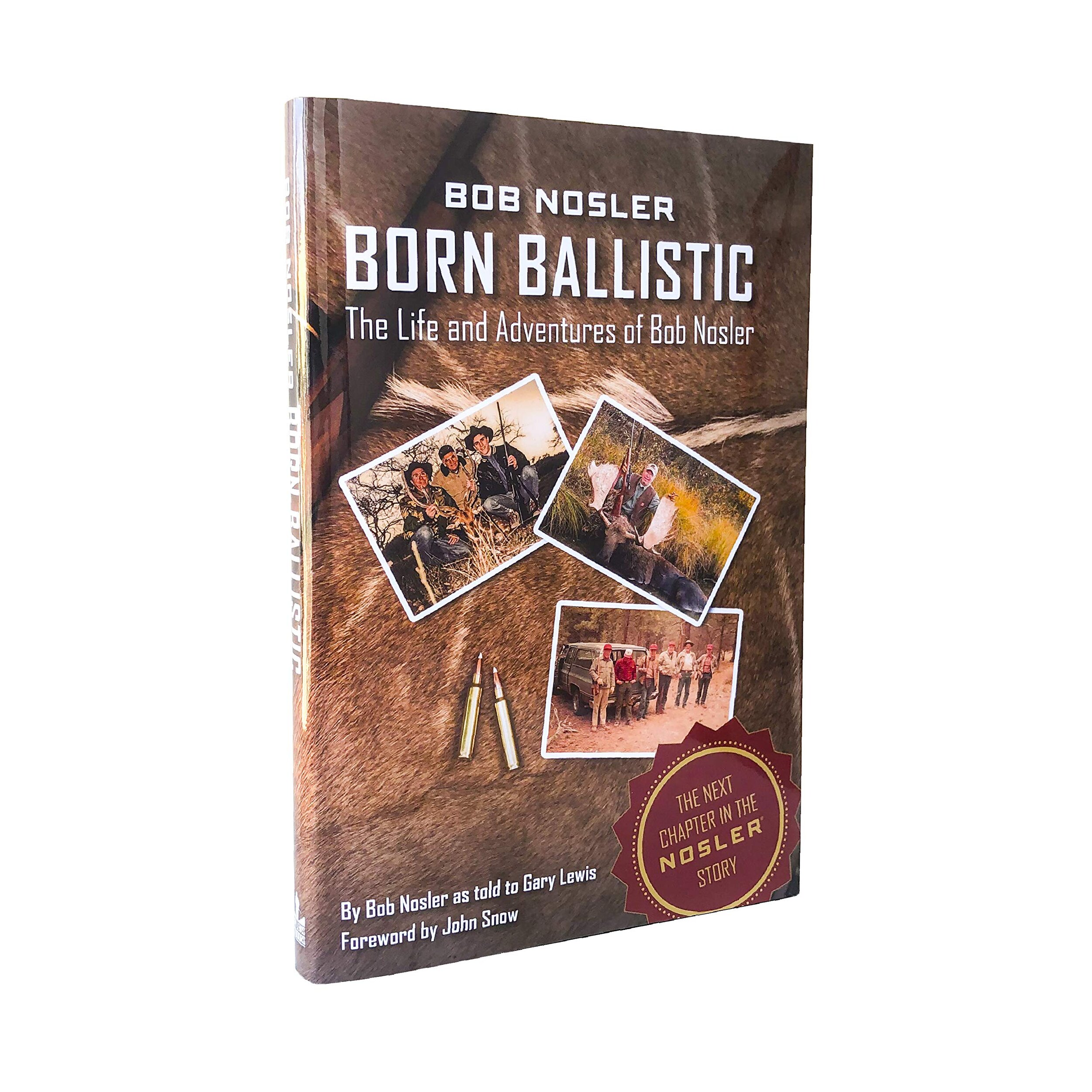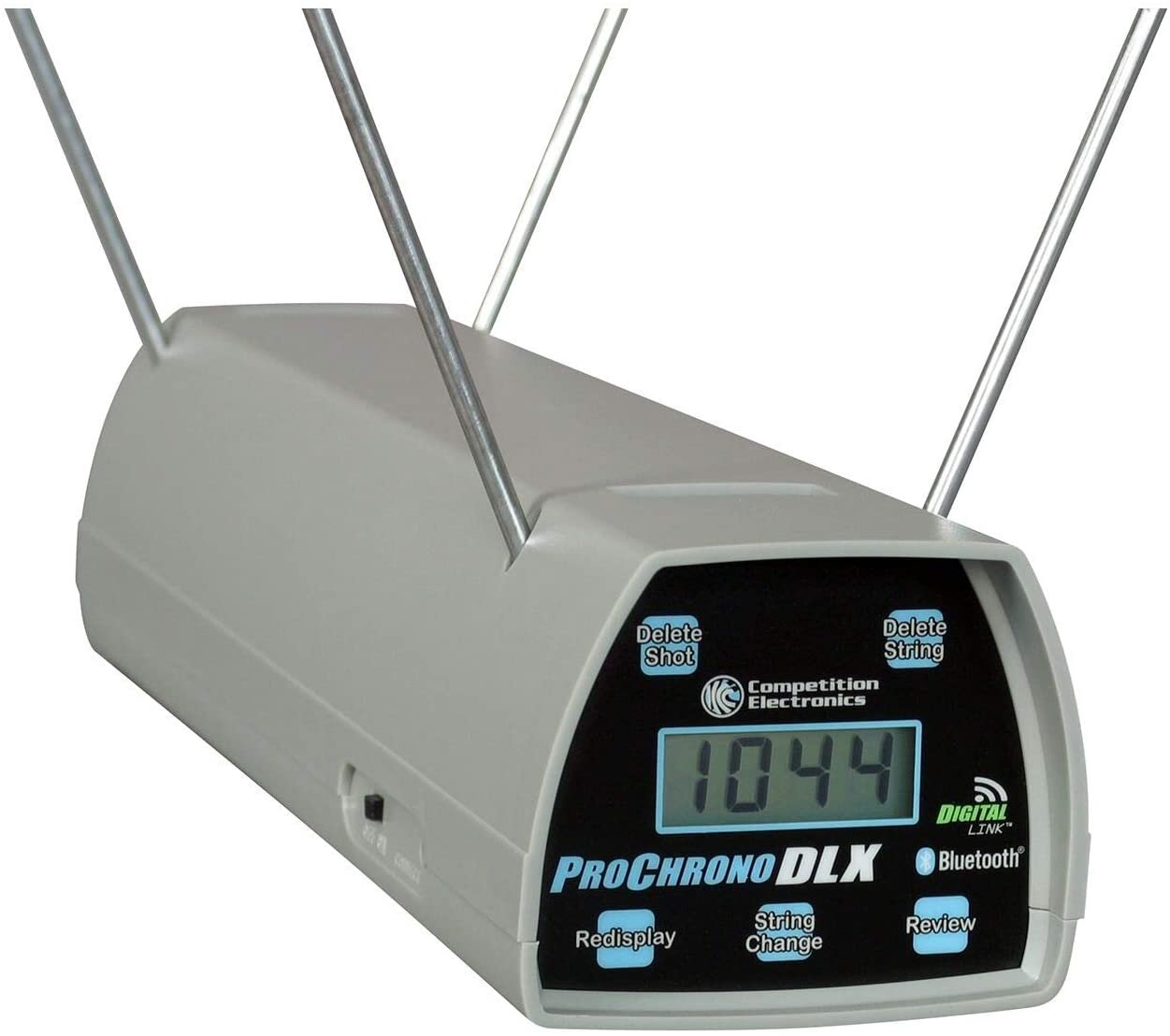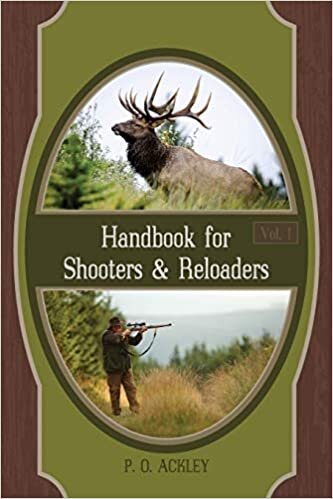Bullets Too Fast to Open
The 7mm Remington Magnum might be okay for poking holes in paper, but it’s just too fast to work on game, right? This group was punched by a Mossberg Patriot. Who says rifles have to be expensive to be accurate?
Did you know the 7mm Remington Magnum shoots so fast that bullets zip right through game without opening? Many hunters have claimed that over the years. Guides have warned me about it. Some outfitters will not allow 7mm Rem. Mags. in their camps. “Too fast! Bring a 300 Win. Mag.”
The fly in the soup of that argument is that the beloved and effective 300 Win. Mag. shoots faster than the 7mm Rem. Mag.
Seriously. Most factory loads for 150-grain bullets in 7mm Rem. Mag. are advertised going 3,100 fps. The 150-grain loads in the 300 Win. Mag. are rated 3,290 fps. Yet we’re supposed to believe the 7mm Rem. Mag. bullets are too fast to expand?
Where does that leave the 7mm STW, 28 Nosler, and — heaven forbid — 7mm Remington Ultra Magnum? Not to mention the 270 WSM, 270 Weatherby Magnum, 27 Nosler, 26 Nosler, 257 Weatherby Magnum… And don’t even suggest the 30-378 Weatherby.
If the 7mm Rem. Mag. is too fast to work on game, where does that leave the 300 Win. Mag., which throws the same weight bullets 100 to 200 fps faster?
Of course this “too fast” bullet theory is not true. I was going to say it’s “hogwash,” but I don’t want to insult well meaning but misinformed folks. Most of us have swallowed “conventional wisdom” passed along in families and hunting camps for generations without reading the fine print. Bullets rise after leaving the muzzle. Certain magnums shoot dead-flat to 500 yards. The 308 Winchester is the most inherently accurate cartridge in the world. The 45-70 hits so hard it flips elk end-for-end and blows whitetails 10 feet backward. And, my favorite, the 30-30 has killed more deer than every other cartridge in the world combined. Yeah, we’ve all taken some bait, hook, line, and sinker at one time or another, so let’s take the high road on this one. Instead of insulting our fellow hunters, let’s simply examine why this old “hunter’s tale” about too-fast bullets is wrong.
First, we need to understand why bullets expand. It’s because they contact a substance that offers enough resistance to exceed the structural integrity of the bullet. I mean “structural integrity” as a general term to describe any combination of bending, flattening, cracking, fragmenting and other forms of physical rearrangement.
But here’s the rub. Such physical reshaping of our bullets only happens with velocity. That’s pretty obvious. I mean, you could slowly lower a four ton block of iron onto the point of bullet standing on end and squash it via shear mass, but we don’t lower on bullets onto game. We throw them. Fast.
Gently place a typical cup-and-core, 150-grain soft-point 7mm bullet on a deer and it will just roll off. Toss it lightly upon that deer and it will bounce off. The deer might be startled, same as it might if an acorn fell on it. Throw that bullet as fast as you can and it might cause a bruise under the deer’s hide, but the bullet would remain intact. Finally, throw the bullet with enough rapidly expanding gas pressure (burning gun powder) so that it moves 3,000 feet per second and it will not only seriously damage the deer, but severely stress, crack, flatten, break or mangle itself. Essentially the deer presses the bullet as much as the bullet presses the deer. The major difference is that the structural integrity of the animal’s tissues are rendered non-functional. It dies. The bullet just comes to rest in a different shape, often in more than one piece.
High velocity means high energy. Projectiles carrying lots of energy change shape upon encountering a resisting force.
Ah, but what if that bullet is a solid chunk of copper or hardened lead completely wrapped in copper or gilding metal? A FMJ? It strikes the animal with as much energy as the foregoing expanding bullet of the same mass and velocity, but it probably does just what the anti-7mm guides claim: it zips through without causing significant tissue damage. Because it truly does not expand. Not because it didn’t have enough time, but because it’s structural integrity wasn’t sufficiently compromised.
Here we are getting to the nub of this issue. Bullet expansion is a product of not just its mass and speed, but its materials and construction. Build a bullet to expand at certain levels of impact energy and resistance and it will do so. Virtually instantly.
We forgot to tell this elk the 7mm Rem. Mag. shoots too fast for bullets to expand. Inexpensive Mossberg Patriot rifle shot MOA. Nosler AccuBond, 162-grains. Leupold scope, obviously. The gold ring was marketing genius.
I recently produced a You Tube video discussing this and showing images of bullet performance in wax test tubes that illustrate how quickly bullets open to create a large wound channel. Some of these bullets are frangible “varmint” bullets we expect to open quickly, some are typical cup-and-core bullets designed to mushroom quickly and widely at certain impact velocities (fairly low) and some are tough, controlled-expansion bullets designed to expand but stay in one piece for deep penetration on big, tough animals. Some are even 22 rimfires going no faster than 1,400 fps upon striking the wax medium.
The “wound channels” in this wax show that all these bullets began opening or at least carving their maximum wound channels almost immediately, some a fraction of an inch after contact. Maximum expansion appears to have occurred within the first two to four inches of penetration. After that all wound channels began narrowing. None gradually or suddenly expanded more to punch a wider wound channel as they slowed.
Lower impact velocity didn’t help this frangible Sierra BlitzKing varmint bullet expand any more dramatically.
When you ponder this, the fallacy of the “too fast” bullet theory is obvious. Pressure and friction are the forces that alter a bullet’s shape. The heavier and faster the bullet, the more pressure it will meet. As velocity slows, pressure and stresses decline. Bullet mangling, flattening and reshaping of all sorts decline.
Regardless the bullet or impact velocity, all started opening within an inch or less of travel into the wax. The more frangible bullets like the 55-grain Ballistic Silvertip aboard the 223 WSSM far left and 180-gr. cup-and-core Power Point on the 300 WSM next to it carved fairly wide but short wound cavities. The harder, controlled expansion 180-gr. XP3 bullet on the 30-06 and 300 WSM on the right punched narrower but longer cavities, but penetrated much farther than the softer bullets. None opened wider deeper into the media.
That leaves bullet materials and construction as the final piece of the puzzle. The softer and or more brittle the metals, the more likely the bullet will break into pieces. Each piece will then carry reduced mass, reduced energy, reduced momentum. Penetration declines. Tissue destruction in the immediate vicinity of the particle dispersion can and often does demolish vitals organs for a quick demise. Imagine one of those explosive varmint bullet wound pockets in or near the heart, aorta, or lungs.
The 7mm Remington Magnum wasn’t going too fast to settle this Namibian oryx during a safari with Werner von Seydlitz of Immenhof Safaris. One all-copper Norma Kalahari bullet did the trick. Notice that Werner has already honored the animal by giving it its “last bite.” Steaks over the grill two nights later were, as always, delicious.
Bullets engineered to expand at the nose to varying degrees increase surface area for tearing tissue in a narrower wound channel, but at increased depth. While doing so soft metals, pure lead most especially, can be stripped, eroded or “washed” from the bullet, reducing its mass and penetration. Hardened lead, lead wrapped in thicker jacket material or locked behind partition walls or bonded to jacket walls minimize weight loss from breakup and erosion. So do solid copper shanks with hollow noses. The depth of the nose hollow determines the degree of expansion at various impact velocities.
Regardless the bullet’s materials and construction, the harder it hits, the more it will be stressed. And hitting hard requires velocity. Not time. No bullet hangs together until tissue friction slows it to a point at which it suddenly deploys some sort of internal expansion machinery.
It’s the bullet, silly. Don’t blame a cartridge for what you determine is poor terminal performance. That’s the bullet’s job. Match bullet type, construction and impact velocity to the game.
Yes, bullets can fail in their assignments, but not because they’re too fast to expand. They might be deflected by too much hair, hide, muscle mass and bone. They might break up on or too near the surface to reach vital organs. They might not open because they are too hard or haven’t met sufficient resistance. But they don’t fail because they have insufficient time to do their work.
As hunters we must study bullet construction and match it to anticipated impact velocities. The latter is a challenge because it changes based not only on cartridge/powder volume and barrel length, which determine muzzle velocity, but bullet B.C. and distance to target, which determine remaining velocity/energy.



